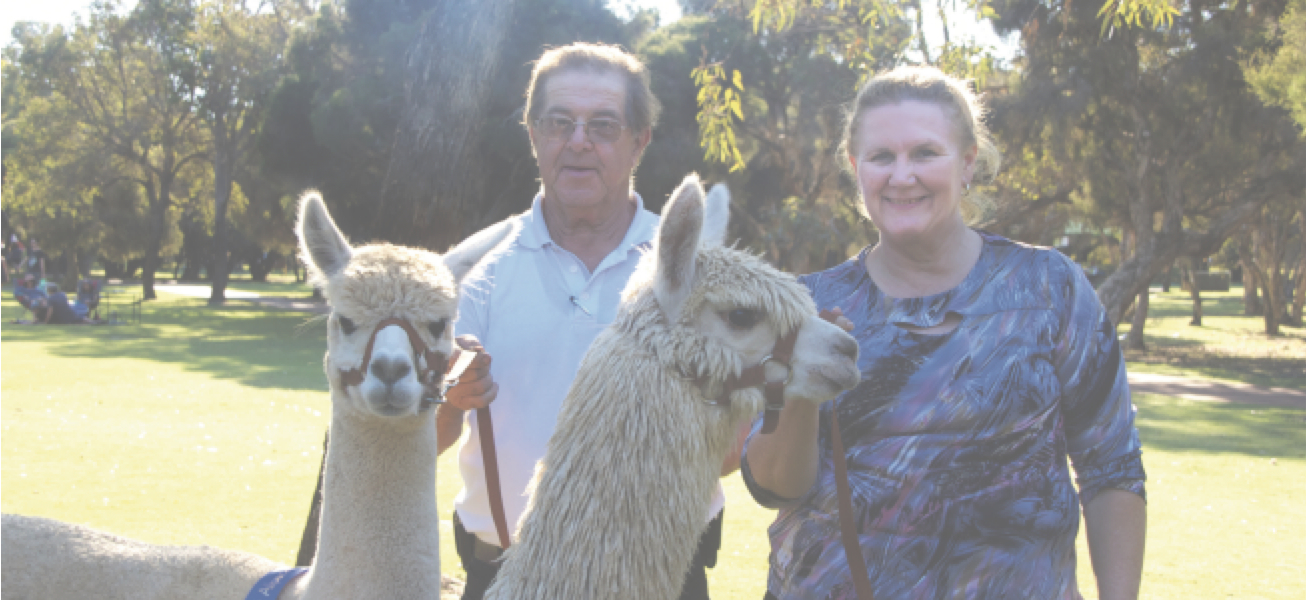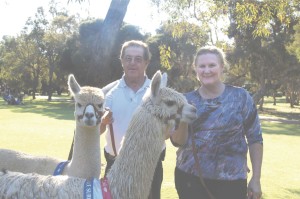Chris Pietraszek was hooked the first time she discovered the unique softness and warmth of alpaca fleece. “I walked into the Toodyay Alpaca Shop (that is no
longer) and put my hand into a bag of Suri fleece – and I instantly fell in love,” she recalls fondly.
Eighteen months later, in 2005, after extensive research, alpacas joined the sheep on Chris and husband Stan’s Bindoon property and their stud Christan Alpacas was
born. “We never wanted to be a large stud, but we wanted to breed for the best quality we could,” says Chris. Ten years later they seem well on their way, taking out
championship and reserve titles along with a number of ribbons at the recent Whiteman Park Alpaca Show.
However Chris’s motive to breed the boutique animal extends beyond ribbons or income. With 40 year’s experience at the spinning wheel, Chris transforms the fleeces grown on her farm into unique and intricate garments. Her passion for alpaca fibre is both as warm and as discerning as the delicately cosy scarves, heirloom shawls, rugs and jackets she creates.
Until recently Chris was selling her garments exclusively through a shop in the Swan Valley, as well as teaching spinning classes in Bindoon. She hopes to soon launch a website to promote the farm and her garments.
With a thirty-head herd, Christan Alpaca stud breeds both types – the suri and the huacaya, they plan and welcome a small drop of about four to six cria (baby alpacas) each year. Chris appreciates the unique qualities of both for different reasons; the mohair-like Suri fleece is silky-soft and beautiful for weaving, with a lock not a crimp, and has little fibre memory. The Huacaya has a more wool-like structure and with its’ elasticity or memory, which is ideal for knitting. “You’ll get a quality article if you start with quality fleece,” she says.
Making an income out of breeding the native Peruvian animals has proved challenging for Australian enthusiasts, many of whom are small farm operators.
However as the Australian Alpaca Association celebrates 25 years of the industry during Alpaca week from May 2-10, the industry looks forward to a great future.
Whilst the demand for genetics and fibre has kept the industry growing, many believe that the last crucial element is using the whole animal – alpaca meat may
be the answer. It’s currently the only industry without a commercial meat avenue or a market for their culls. With only 5-6% fat alpaca is a healthy meat which sustained the Incas for centuries. Its rise in popularity locally could be the turning point for this boutique industry. Perhaps we’ll soon be seeing it at the local butcher!









